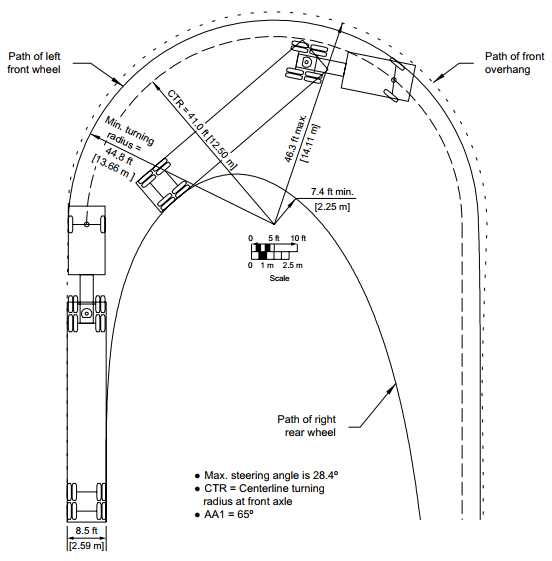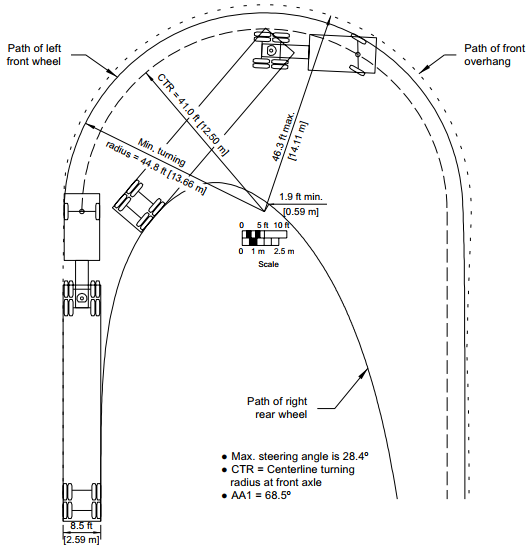2.5 Geometric Design Considerations
Because of their larger size relative to passenger vehicles, commercial trucks require special consideration for roadway design.
Figures 2.11 and 2.12 illustrate the minimum required turning paths for the WB-62 and WB-67 design vehicles.

Figure 2.11: Minimum Turning Path for Interstate Semitrailer (WB-62) Design Vehicle
Source: AASHTO (2018), Figure 2-23

Figure 2.12: Minimum Turning Path for Interstate Semitrailer (WB-67) Design Vehicle
Source: AASHTO (2018), Figure 2-24
The clearance distance (height) between a roadway and an overpass is generally based on the maximum allowable height of a tractor-trailer. For an overpass that crosses above a sag vertical curve, a tractor-trailer is typically used as the design vehicle because the sight distance is more constrained for truck drivers sitting higher above the ground than for drivers of passenger vehicles.